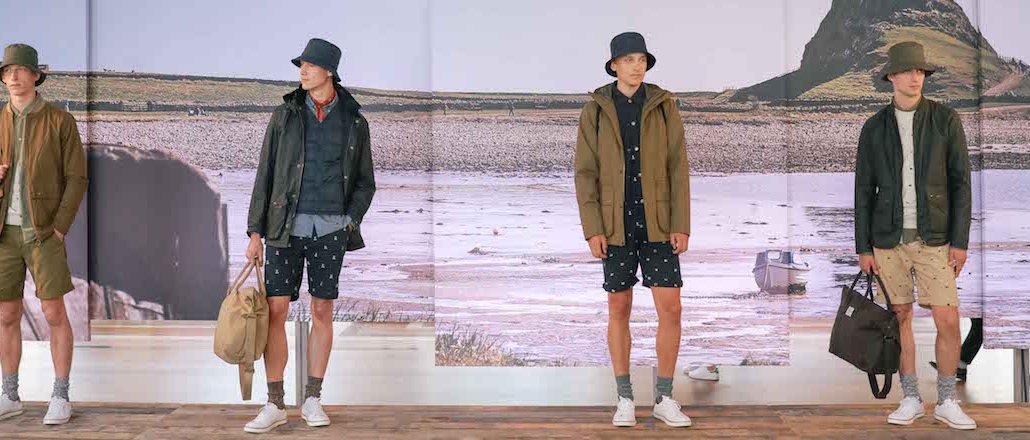Register by Jan 13 to save on passes and connect with marketers from Uber, Bose and more

Virtual Reality’s younger, cheaper cousin — 360-degree video — is an increasingly popular gizmo in the marketer’s toolbox.
Facebook’s 360-degree video platform alone has seen over 20,000 uploads in the 12 months leading up to April, while the majority of uploads on YouTube’s platform get six-figure views.
The medium promises viewers an immersive experience that gets them closer to the action. riut, like any young technology, there’s still a way to go, in offering, for example, tools to track engagement.
Earlier this year, we looked at how U.S. brands are using it. Now, brands in the U.K. are testing the format’s potential for different reasons. Here’s why.
Granting access
Like many brands, Barbour is using digital tools to give its fans access normally reserved for the press and VIPs. In June, it captured its Spring/Summer 2017 show at men’s fashion week using a 360-degree camera. The video of the show, created by agency Cult LDN, was edited and uploaded to its social channels in under an hour.
“As more and more platforms move toward 360-degree content and audiences increasingly engage with it, we wanted to connect with users in an innovative and exciting way,” Paul Wilkinson, Barbour’s global marketing head, told Digiday.
There’s no ability to live stream in 360-degree video, yet. But that’s a logical next step for brands seeking to harness the immersive nature of VR with the immediacy of platforms like Snapchat and Periscope.
Tugging heartstrings
Nicholas Crowe, U.K. marketing manager for Opera Mediaworks EMEA, said the 360-degree format lends itself to verticals that are centered around experience. “It’s hard to do with an FMCG brand, for example, a deodorant,” he explained.
With this in mind, football club West Ham opted for a cinematic approach to its 360-degree video project, #ImagineBoleyn, released last month. The film is a tribute to the team’s old training ground, which it is leaving for a new home in East London’s Olympic Stadium.
Actor Ray Winstone narrates the short film, which guides viewers through different parts of the grounds, including the dressing room and the pitch. With cuts, special effects and emotive music, the action is designed to pull on viewers’ heartstrings. So far it has clocked up 310,000 views on Facebook.
Dropping Easter eggs
For Crowe, the main issue that brands face with the medium is getting assets like text and visual effects looking good. “360-degree video is offered by many production companies, but it costs quite a bit to get a decent execution,” he said.
Unlike traditional video, 360 degree puts users in the director’s chair. They can choose which people — or objects — to home in on as the action unfolds. For the launch of its Spring/Summer homeware collection, George at Asda, the supermarket chain’s clothing brand, turned this feature into a game.
The brand hid “Easter eggs” (hidden bits of content) for users to find inside the tour of its branded house. The first person to uncover them all was rewarded with £250 worth of vouchers.
The video, created with agency Fallon, received over 11,000 views on Facebook and nearly 1 million on YouTube.
“This kind of content works a lot harder for you. Easter eggs are something that make people watch again and again,” Bridey-Rae Lipscombe, CEO of agency Cult LDN, told Digiday.
Digitizing the showroom
Cars are an obvious fit for immersive technologies. According to an Accenture survey, 75 percent of consumers want to bring the entire buying process — from discovery to financing — online.
Rolls Royce is one of several brands using 360-degree video to address this shift. For the release of its 103EX model, it created a tour of the vehicle’s features spruced up with some fancy graphics and aspirational crooning. The YouTube video has just shy of 180,000 views.
Making viral content
The FIA Formula E Championship, launched in 2012 to race electric vehicles, is using 360-degree video to add an immersive layer to its short-form content. Unlike the one-off projects and big-budget ads, the racing brand has been using the format to engage YouTube users with high-risk content around crashes, stunts and driver-side action.
Its video of stuntman Damien Walters doing a backflip over a car moving at high speed has amassed over 1.2 million views. According to Cult LDN’s Lipscomb, this kind of content can be done on budget, but planning cannot be overlooked. “Previously, you could rely on the editing process, but this requires more forward planning. There’s only one take,” she said.
Meanwhile, the non-360-degree original video has over 5 million views. There’s clearly a way to go before brands make the most of this format.
More in Marketing

‘The year where the dust settles’: Digiday editors share 2026 predictions
Between generative AI pilot projects and emerging agency hold co models, 2026 will be the year that signals turn into strategy.

Virality is no longer just a vibe at MrBeast’s Beast Industries
MrBeast is hiring a head of viral marketing. Marketers would be wise to pay attention.

‘This is what the future will look like’: Accenture Song has moved upstream of advertising
Accenture Song has outgrown the agency business without becoming an agency.





